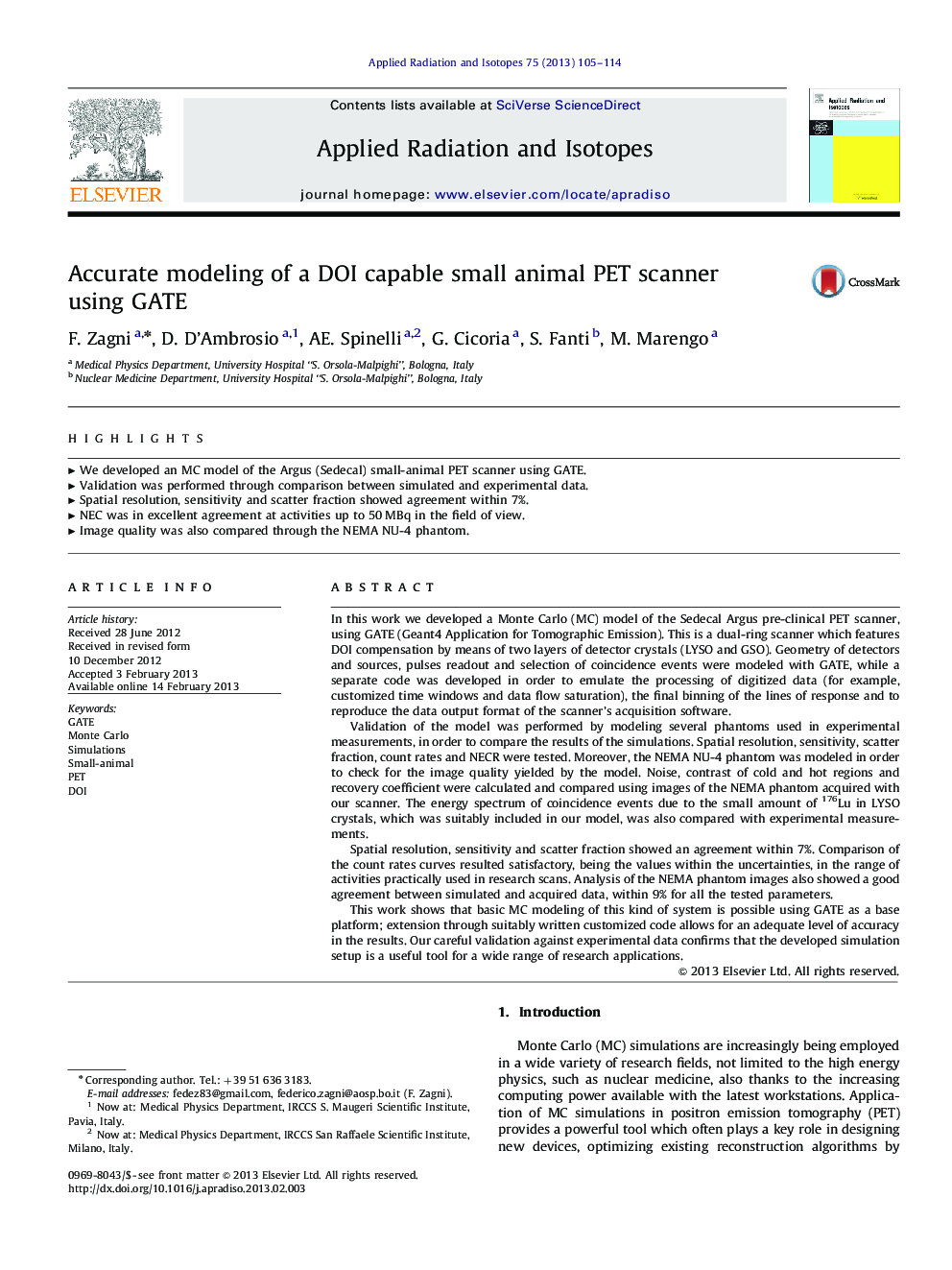| Article ID | Journal | Published Year | Pages | File Type |
|---|---|---|---|---|
| 1879192 | Applied Radiation and Isotopes | 2013 | 10 Pages |
In this work we developed a Monte Carlo (MC) model of the Sedecal Argus pre-clinical PET scanner, using GATE (Geant4 Application for Tomographic Emission). This is a dual-ring scanner which features DOI compensation by means of two layers of detector crystals (LYSO and GSO). Geometry of detectors and sources, pulses readout and selection of coincidence events were modeled with GATE, while a separate code was developed in order to emulate the processing of digitized data (for example, customized time windows and data flow saturation), the final binning of the lines of response and to reproduce the data output format of the scanner's acquisition software.Validation of the model was performed by modeling several phantoms used in experimental measurements, in order to compare the results of the simulations. Spatial resolution, sensitivity, scatter fraction, count rates and NECR were tested. Moreover, the NEMA NU-4 phantom was modeled in order to check for the image quality yielded by the model. Noise, contrast of cold and hot regions and recovery coefficient were calculated and compared using images of the NEMA phantom acquired with our scanner. The energy spectrum of coincidence events due to the small amount of 176Lu in LYSO crystals, which was suitably included in our model, was also compared with experimental measurements.Spatial resolution, sensitivity and scatter fraction showed an agreement within 7%. Comparison of the count rates curves resulted satisfactory, being the values within the uncertainties, in the range of activities practically used in research scans. Analysis of the NEMA phantom images also showed a good agreement between simulated and acquired data, within 9% for all the tested parameters.This work shows that basic MC modeling of this kind of system is possible using GATE as a base platform; extension through suitably written customized code allows for an adequate level of accuracy in the results. Our careful validation against experimental data confirms that the developed simulation setup is a useful tool for a wide range of research applications.
► We developed an MC model of the Argus (Sedecal) small-animal PET scanner using GATE. ► Validation was performed through comparison between simulated and experimental data. ► Spatial resolution, sensitivity and scatter fraction showed agreement within 7%. ► NEC was in excellent agreement at activities up to 50 MBq in the field of view. ► Image quality was also compared through the NEMA NU-4 phantom.
